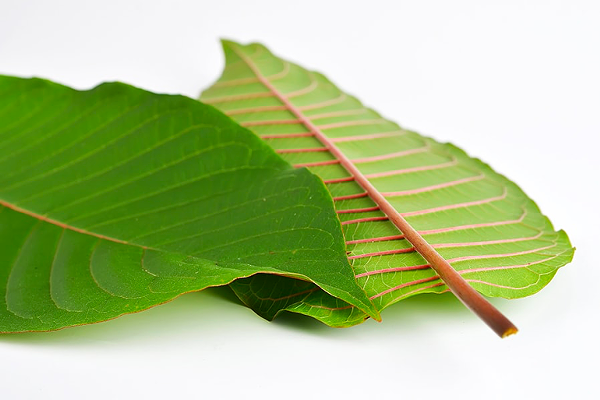
Kratom (Mitragyna speciosa) is a tree in the coffee family, found in Thailand and other tropical countries. Traditionally, in Southeast Asia, people have chewed its leaves or made them into a tea that’s used to fight fatigue and improve work productivity. Kratom has also traditionally been used during religious ceremonies and to treat medical conditions such as pain and diarrhea, sometimes as a substitute for opium.
Two compounds in kratom leaves, mitragynine and 7-hydroxymitragynine, interact with opioid receptors in the brain, producing sedation, pleasure, and decreased pain when taken in high doses. Lower doses cause alertness instead of sedation. The Red vein Bali kratom originates in Indonesia. It’s reddish in color and believed to provide effective pain relief. Kratom is known to have a variety of reported uses and desired effects, from sexual enhancement to pain relief to a “safe” and legal “high.” In North Carolina, New York, Colorado, and possibly more states, kratom may be sold as a drink called ketum in bars, The New York Times states.
Red Bali Kratom Effects You Should Know
According to users the Red Vein Bali Kratom is the most “opioid-like” of all the kratom strains. It may help relieve pain-related conditions, such as depression or chronic pain.
The Nursing Show publishes that kratom likely takes effect within 5-15 minutes and remains effective for 2-5 hours after taking it. In low doses, red bali kratom is considered to be a stimulant drug that increases sociability and alertness. In higher doses, red bali kratom may have effects similar to those of opioid drugs. These effects include:
- Reduced anxiety
- Sedation
- Lowered pain sensations
- Relaxation
- Pinpoint pupils
Additionally, red bali kratom may produce a “high,” or rush of euphoria that is akin to the effects of opioid abuse. The New York State Office of Alcoholism and Substance Abuse Services (NY OASIS) compares the interaction of kratom with opiate receptors in the brain to how morphine interacts with the brain. Opioid drugs bind to opioid receptors, which then creates a flood of some of the brain’s neurotransmitters, or chemical messengers, that help to regulate mood and influence the decision-making process.
When the level of these neurotransmitters is increased in the brain, it makes a person feel good, thereby elevating mood. Opioid abuse causes a high that leaves a person feeling euphoric, mellow, and less sensitive to pain.
Kratom abuse may have similar effects. In some cases, kratom exposure has resulted in psychosis. Symptoms of kratom-induced psychosis may include hallucinations, confusion, and delusion, the DEA reports.
Although it is still legal in the United States, the US Drug Enforcement Administration has placed kratom on its “Drugs and Chemicals of Concern” list. Physicians should be aware of the availability, user habits, and health effects of kratom. Further research on the therapeutic uses, toxic effects, and abuse potential of kratom and its constituent compounds are needed. SEE: Kratom Drug Test: Does Kratom Show Up On A Drug Test?
Conclusion
At low doses, red bali kratom produces stimulant effects with users reporting increased alertness, physical energy, and talkativeness. At high doses, users experience sedative effects. Kratom consumption can lead to addiction. Several cases of psychosis resulting from use of kratom have been reported, where individuals addicted to kratom exhibited psychotic symptoms, including hallucinations, delusion, and confusion. Kratom’s effects on the body include nausea, itching, sweating, dry mouth, constipation, increased urination, tachycardia, vomiting, drowsiness, and loss of appetite. Users of kratom have also experienced anorexia, weight loss, insomnia, hepatotoxicity, seizure, and hallucinations. SEE: How To Stop Kratom Wobbles




